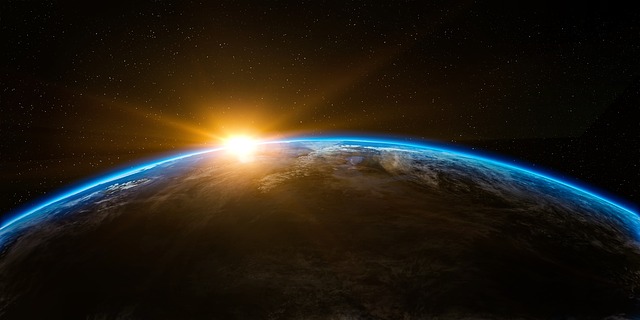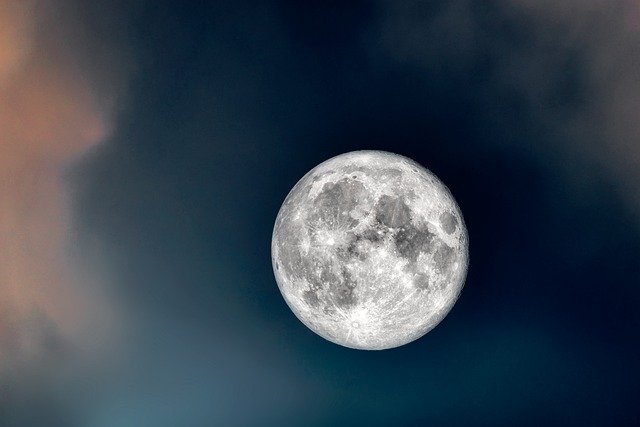*This post may contain affiliate links. This means we may make a commission if you purchase an item using one of our links*
The main differences between Earth and Moon is that Earth is 71% water, is able to harbor life, is bigger with a diameter of 12,742km and is the terrestrial planet that the Moon orbits whereas the Moon is made mostly of igneous rock, is much smaller with a diameter of 3,474.8km and is the only natural satellite that is tidally locked and orbits Earth.
There are numerous other differeneces between the two so continue reading if you’re seeking a more thorough breakdown of what these differences are below.
What Is The Planet Earth?
Table of Contents

Our home planet Earth is the 3rd farthest planet from the Sun, made up of a mixture of water and solid rock like objects, and is the only entity in our solar system known to allow intelligent life forms like ourselves to exist.
Earth’s distance of 152 million km from the Sun has allowed it to remain within the goldilocks zone and as a result, the planet has been able to thrive for millions of years. It orbits the Sun in a circular pattern, much like all the other planets, has only one natural satellite which would be the Moon and is a terrestrial planet to boot.
In regards to its diameter, Earth is the 5th largest planet with a diameter 12,742km.
Earth’s temperature ranges based on the region you’re located where it can be as low as -94 degrees Celsius in Antarctica to as high as 50 – 55 degrees Celsius in Tunisia.
As for the planets composition, it consists of the crust, the mantle, the outer core and the inner core, where the inner core is the hottest element within the Earth reaching temperature in excess of 5,200 degrees Celsius.
In regards to some of its most unique features, Earth is around 71% water, has an atmosphere consisting mostly of oxygen and nitrogen that is also made up of 5 main layers, with the highest to lowest being the troposphere, stratosphere, mesosphere, thermosphere and exosphere.
A day on Earth is 24 hours and an orbital cycle around the Sun takes 365 days to complete. It’s axial tilt is more distinct at 23.5 degrees to the right.
What Is The Moon?

The Moon is the gray celestial being that orbits our Earth. It is also tidally locked to Earth meaning that we only see one side of it at any given time across our skyline.
It takes the moon roughly 27 days to complete an orbit around Earth, which it does in an elliptical pattern. The Moon’s axial tilt is very straight at 1.5 degrees. As a result of the tidally locked status along with the effects that Earth has on its general rotational patterns, it takes the Moon roughly 29.5 days to complete a day.
In regards to its temperature, it fluctuates where it can be really hot at 127 degrees Celsius when the Sun is shining on it and as low as -173 degrees in areas where the Sun does not strike it. It’s core on the other hand is far hotter ranging between 1,327 to 1,427 degrees Celsius.
This is as a result of the lunar entity’s extremely thin to practically non-existent atmosphere, which not only results in these massive temperature shifts but, is also the reason why it has over 100,000 craters on its surface.
Speaking of the Moon’s surface, the entity is mostly made of rocks, iron, magnesium much like most of the other moons and terrestrial based planets in our solar system.
It is among the bigger moons in our solar system with a diameter of 3,474.8km and a mass of 7.35 × 10^22 kg, which actually places it fifth amongst all moons in our solar system and would also make it bigger than the dwarf planet Pluto.
Despite all the advancements in technology, the last time a manned mission was made to the Moon was on the Apollo 17 way back in December 1972 and no further missions have been done since, possibly as result of the political agendas behind the numerous countries vying for opportunities that involve the Moon that we don’t know of.
Similarities Between Earth And The Moon
The Earth and Moon do share a lot in common, after all the Moon’s actions for one are mostly linked to Earth and to some degree, specific features like tides are directly as a result of the Moon’s effect on Earth. As for some of their other similarities they include the below:
- Both have a hotter central core.
- Both have a rocky, terrestrial surface.
- Both are spherical in shape.
- Neither have rings surrounding them.
- Both take roughly 365 days to orbit the Sun
Differences Between Earth And The Moon
As for how the Moon and Earth differ, they would include the following:
- The Moon is tidally locked to the Earth but Earth isn’t tidally locked to the Moon.
- Earth is bigger than the Moon with a diameter of 12,742km compared to the Moon’s 3474.8km.
- The Moon only has a very thin exosphere whereas Earth has a 5 layer atmosphere.
- Earth is 71% water and 29% land whilst the Moon is mostly rock based with igneous rock being the primary type of rock that it’s made of.
- Earth has a more balanced temperature depending on the region your find yourself at where it can range from -94 to 55 degrees Celsius. On the other hand the Moon is between -173 to 127 degrees Celsius.
- Earth has one natural satellite in the Moon whereas the Moon has no celestial objects orbiting it.
- The Moon has an estimated 100,000 craters whereas Earth has only 128 known impact craters.
- Earth’s core is far hotter with a temperature of 5,200 degrees Celsius as opposed to the Moon’s which is between 1,327 -1,427 degrees Celsius.
- Earth’s gravity is 6 times stronger than the Moon’s.
- Earth has an axial tilt of 23.5 degrees whilst the Moon’s axial tilt is 1.5 degrees.
- One day on Earth takes 24 hours to complete whilst the Moon completes a day in 29.5 days.
- It takes the Moon 27 days to orbit Earth.
- The Moon orbits Earth elliptically whereas Earth orbits the Sun in a circular pattern.
- Earth has a mass of 5.972 × 10^24 kg whereas the Moon’s mass is far smaller at 7.35 × 10^22 kg.
Summary
Earth and the Moon may be linked in various ways and may share some similar features such as their terrestrial nature and how they influence each others orbit but, they differ too much to really fall under the same bracket of entity.
Whether it be their temperature, size, atmosphere composition, ability to harbor life and beyond. Ultimately Earth and the Moon don’t share very much in common when it comes to how they function.

